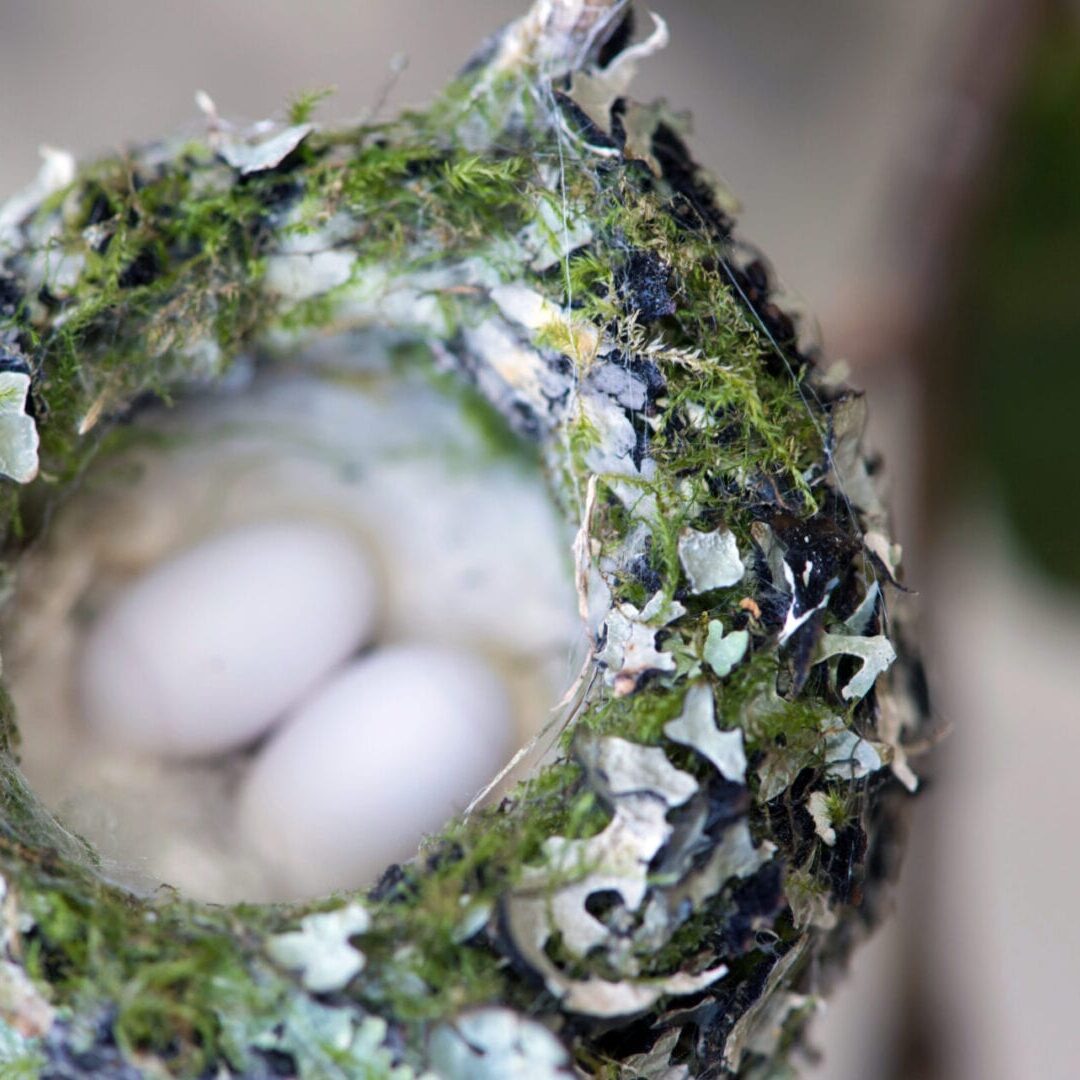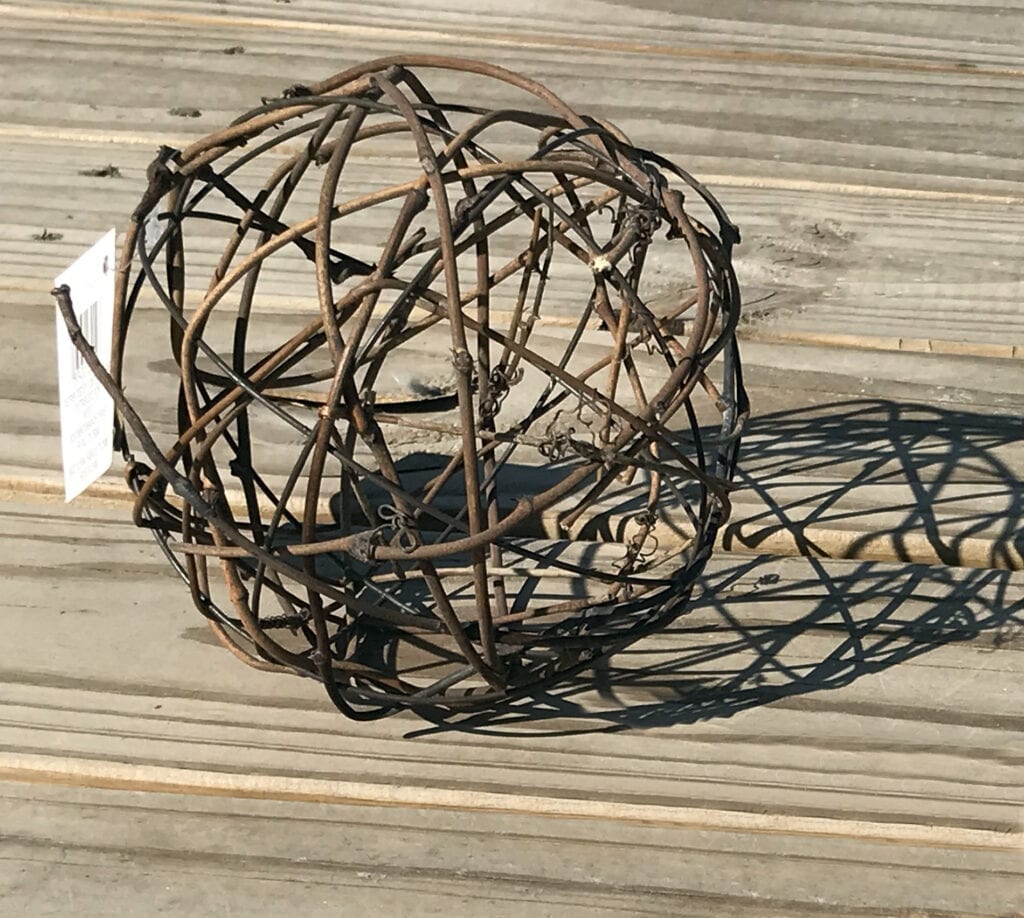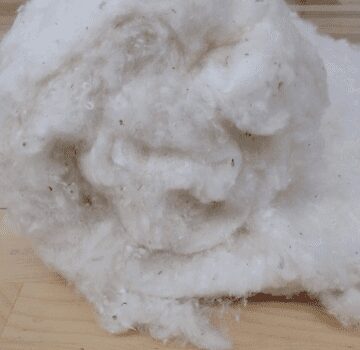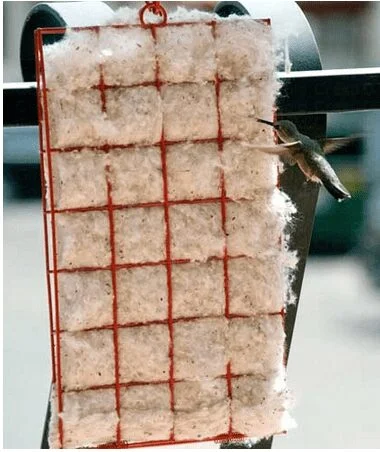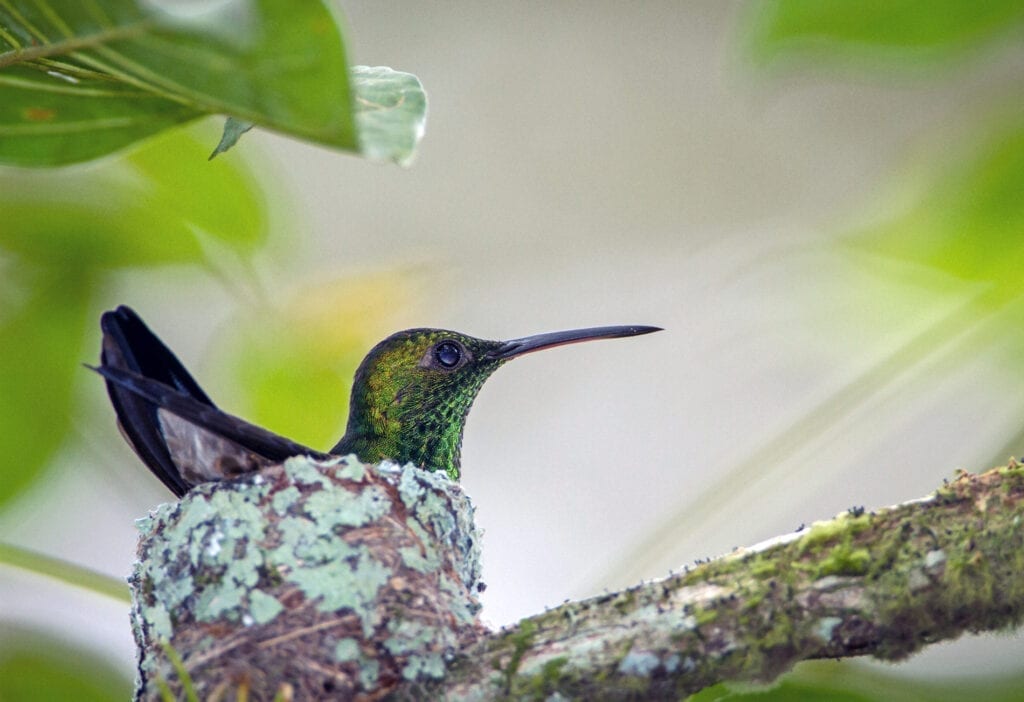
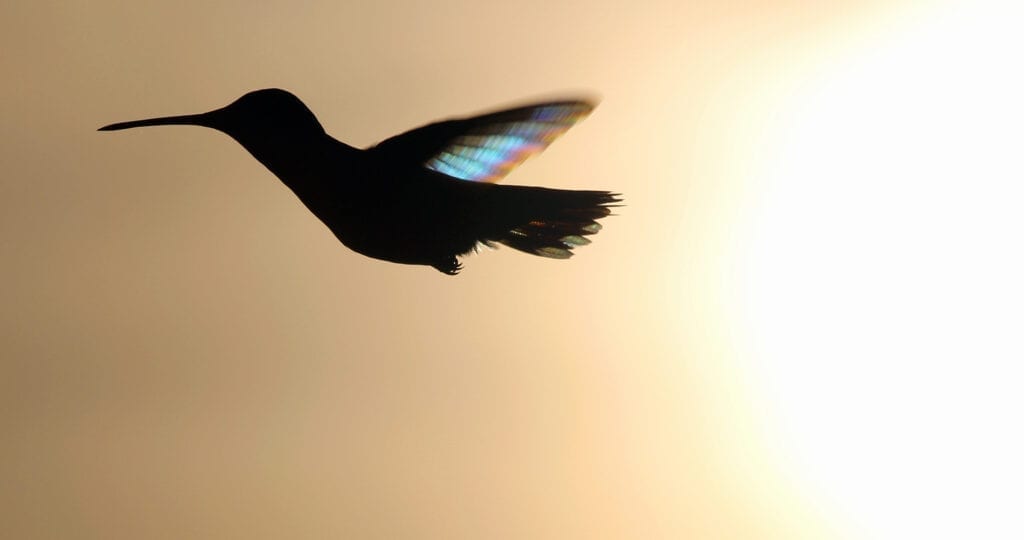
Learn how to get hummingbird nests in your yard. Also the best nesting materials to offer them, both DIY and buy-it.
Yikes! Your hummingbirds will be back soon. In fact, they’re already on their way to your yard. So, you won’t want to waste any time getting ready for their arrival, especially if you want to get hummingbird nests in your yard.
It’s a Herculean effort to build a hummingbird nest. Because they’re building it while trying not to starve.
Providing safe, convenient nesting material makes a monumental task a lot easier, saving time and precious energy. As a result, increasing their chances of survival.
Have you always wanted to find a hummingbird nest in your yard?
Make your yard their favorite yard.
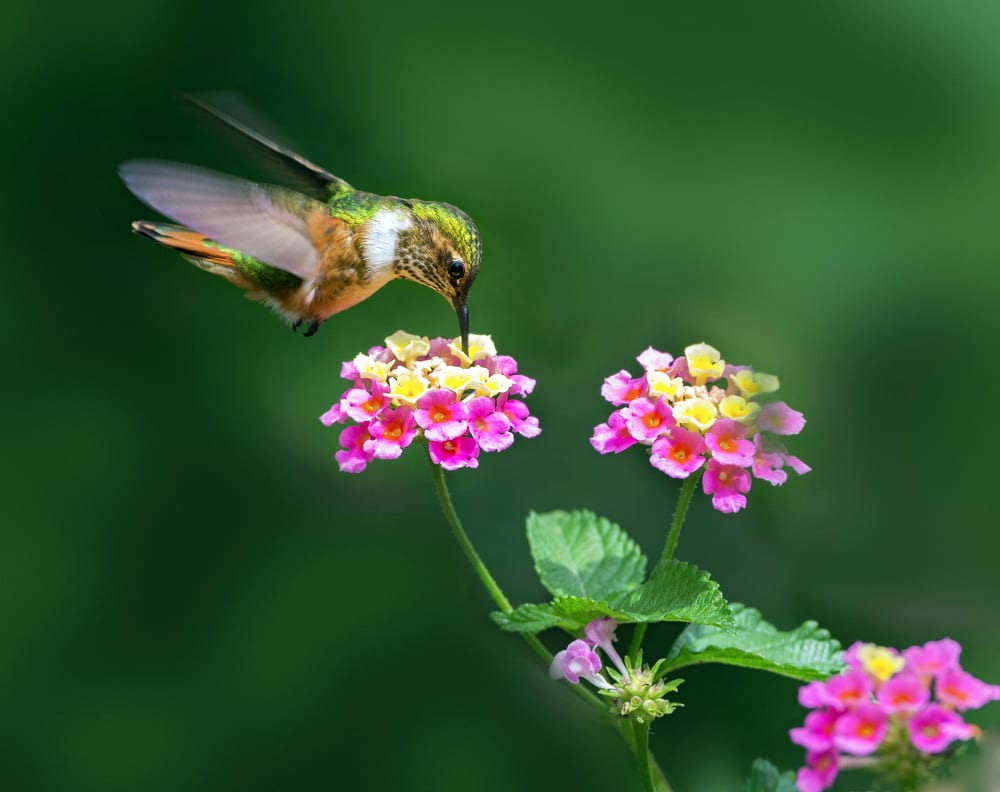
There’s no question, your feeder is the #1 way to boost your ranking with hummingbirds. Just as important, however, are flowers.
Flowers attract those hummingbirds in the first place. But that’s a whole ‘nuther subject that we’ll cover in the next blog.
Dial it up and turn your yard into Hummingbird Haven. Just by providing hummingbird nesting material.
With a feeder and nesting material in the same place, it could make your yard irreistible. And, it’s actually pretty easy.
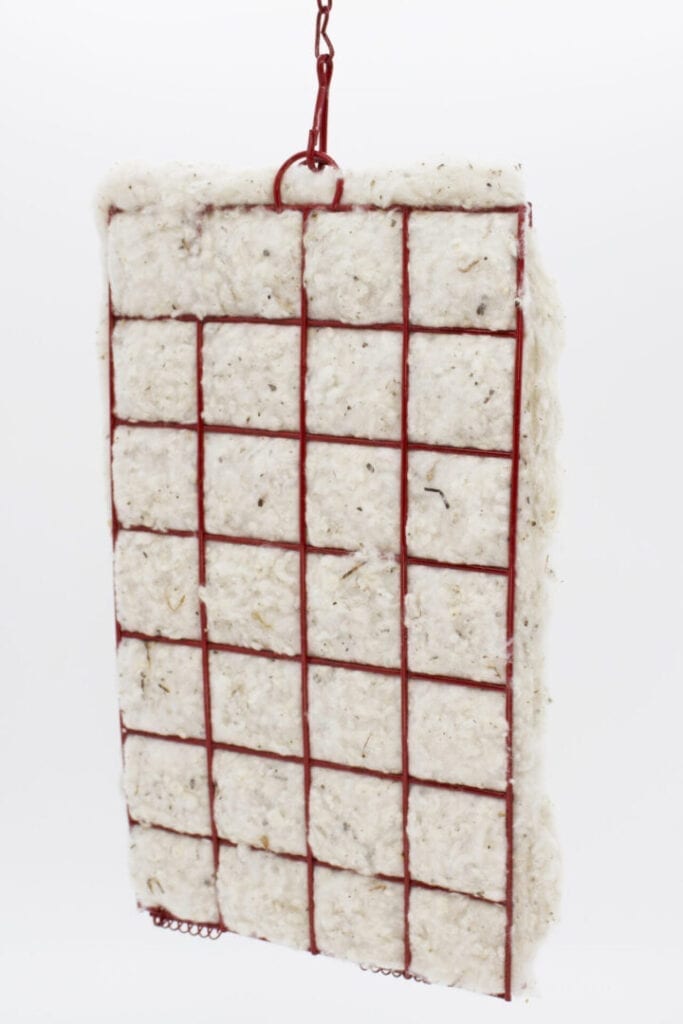
Here’s how..
There are a few options for offering hummingbird nest building material to hummingbirds. The DIY and Buy-it. The good news is that both are really easy.
You can simply buy a hummingbird nest material kit. It’s almost instant; Just add money and a few days for shipping. There’s a link to buy one a little further down. Before you decide, and zoom down to the link, read on. You may change your mind.
On the other hand, the DIY way is really easy. Cheaper, too. So, that’s what we’ll focus on, first.
DIY option:
A favorite for hummingbird nests is cattail ‘fluff’. It’s easy to get and FREE.
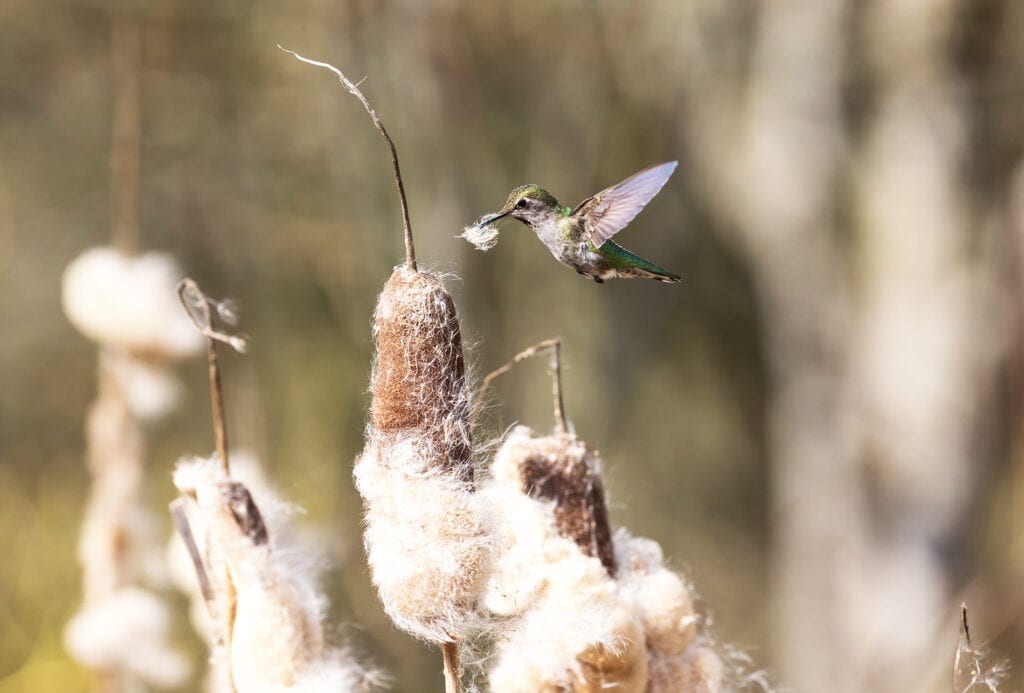
If your area has ditches, swamps, or ponds, there are cattails.
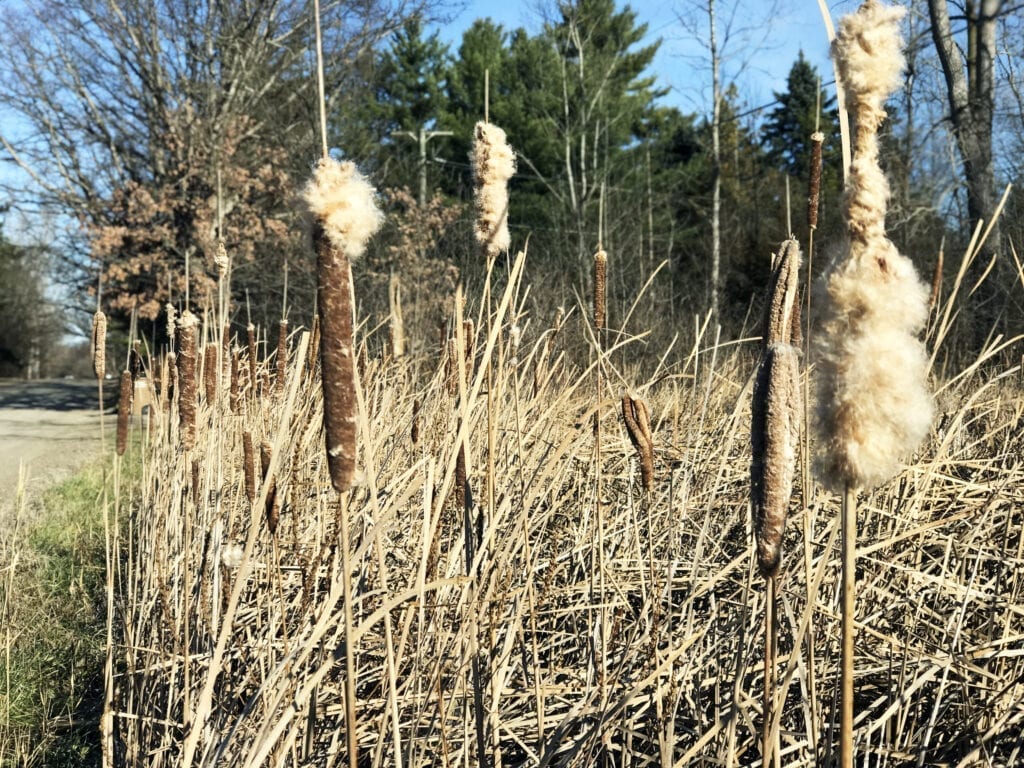
Make it a fast ‘grab & run’. You only need some hand pruners and a bag. Just cut a off a few cattails, throw ’em in the bag, and scram. You’ll only need a few. So you’ll probably get more than you need, especially if you’re a guy. It is the way.
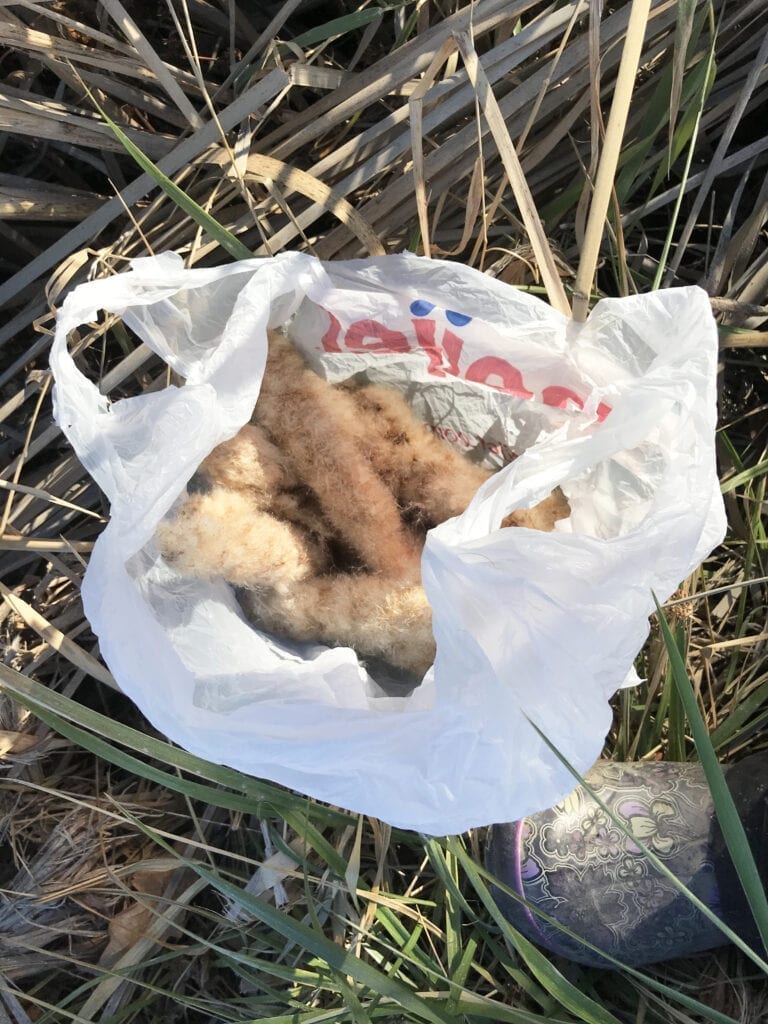
Nobody will bother you because people walking down the road with a bag, well, pretty much get left alone. Do we need to mention that you should wear rubber boots? A soaker would be unpleasant and embarrassing. Especially if you’re walking home… with a bag.
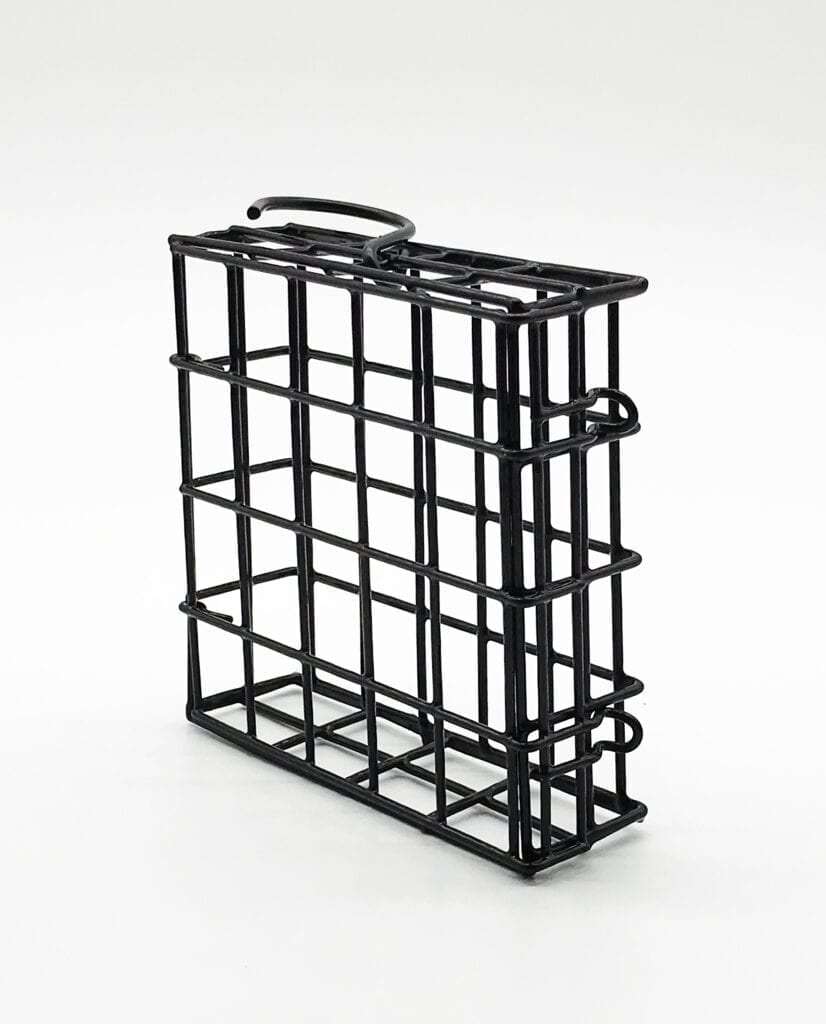
Once you have the cattails, all you need is a cheap suet feeder. These usually cost less than $4. They’re available anywhere bird seed is sold.
A craftier, more decorative, option uses a grapevine ball.
Grapevine, or vine topiary, balls are available at most craft stores for under $6. Here’s a link to one.
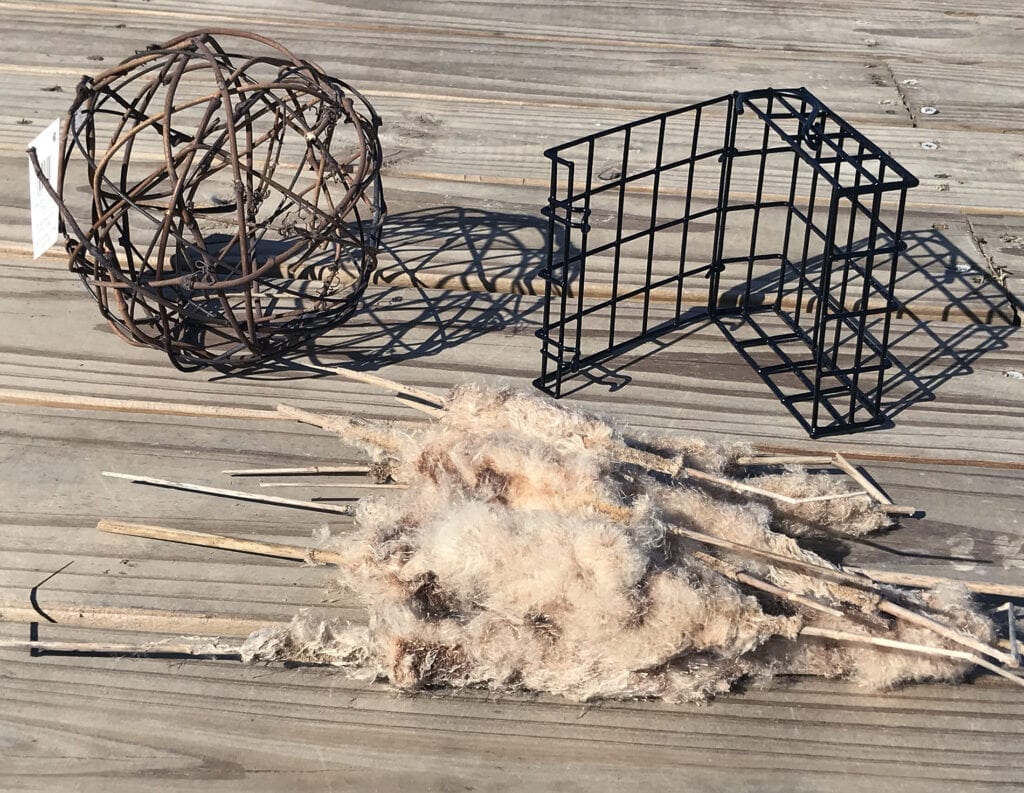
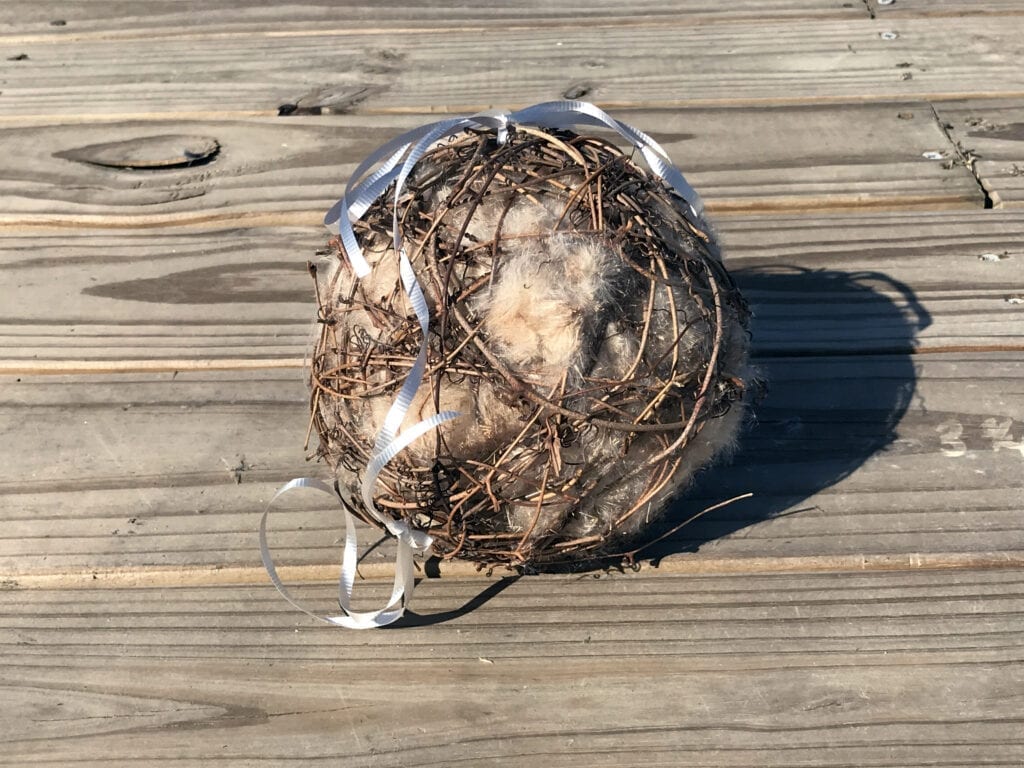
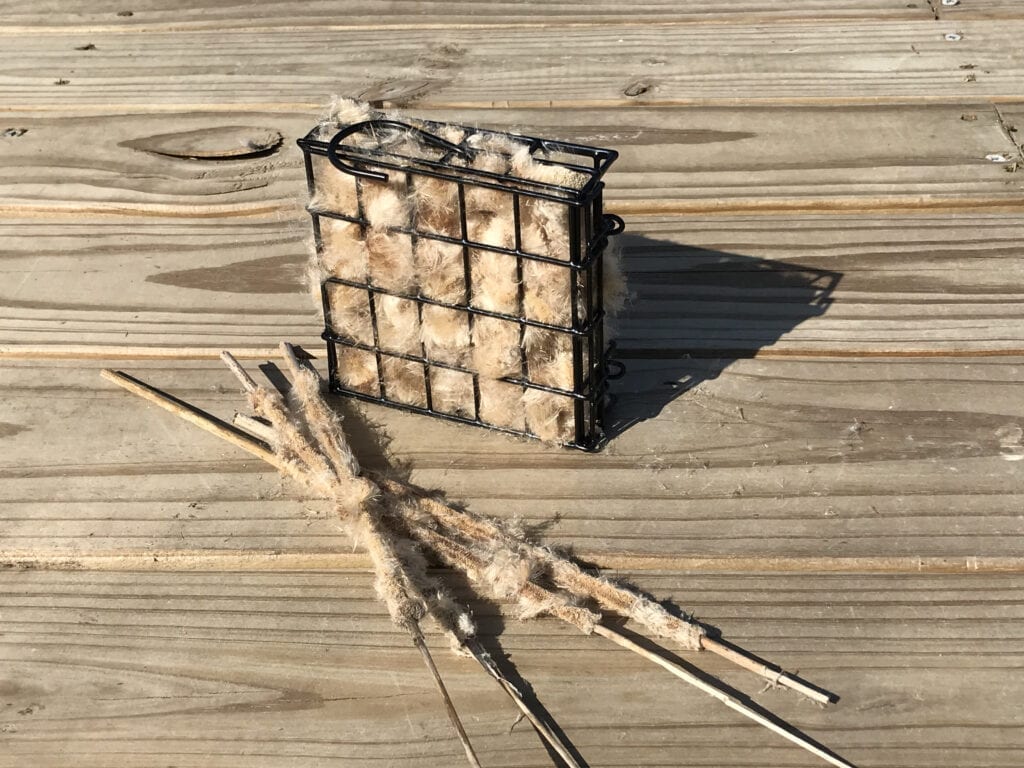
Stuff the suet feeder, or grapevine ball, full of the stolen cattail fluff. In case it’s not obvious, do this outdoors, when it’s not windy. Tie a ribbon on the grapevine ball for hanging. Voilà . Done.
NO CATTAILS?? No worries.
Instead of cattails, you can use natural cotton stuffing. Be sure it’s organic cotton stuffing to avoid the chemicals used in regular cotton production.
You can buy organic cotton stuffing by the pound from Organic Cotton Plus. AND, there’s a coupon code just for us hummingbird crazies. Here’s the Code: Hummernest10 It’s good for all their products, with no minimum order. If you want smaller quantities, (4oz = about a suet feeder-full at a time, click here.
The Buy-It option:
On the other hand, there’s the very easy hummingbird nest ‘kit’ option, mentioned earlier. Just buy it and hang it outside. Click the picture below for the long-awaited link to buy one. You’ve made so far! You may as well keep reading, at least for the pictures and video.
The hummingbird nest kit comes filled with natural, unbleached cotton. It’s very safe for hummingbirds. Pre-cut refills are available, too. Check out the great video of hummingbirds giving the nesting kit a good working over.
The soft fiber you offer will provide most of the nest material for your hummingbirds. They may also add in some soft plant material for strength and camouflage.
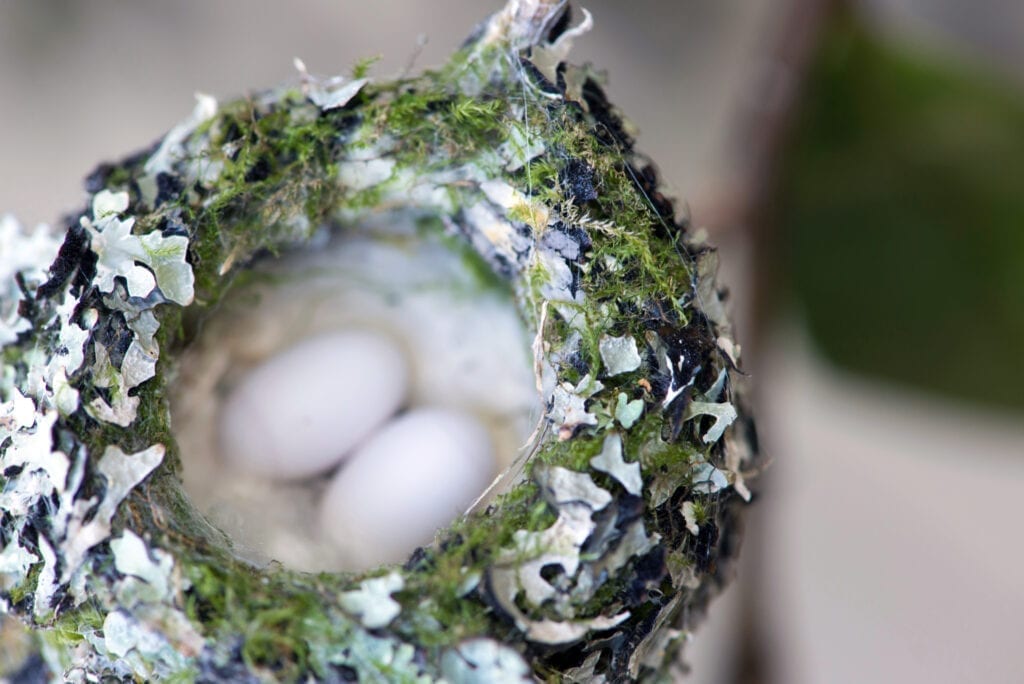
Then, get this… They’ll glue it together with spider webs! After eating the spider, of course.
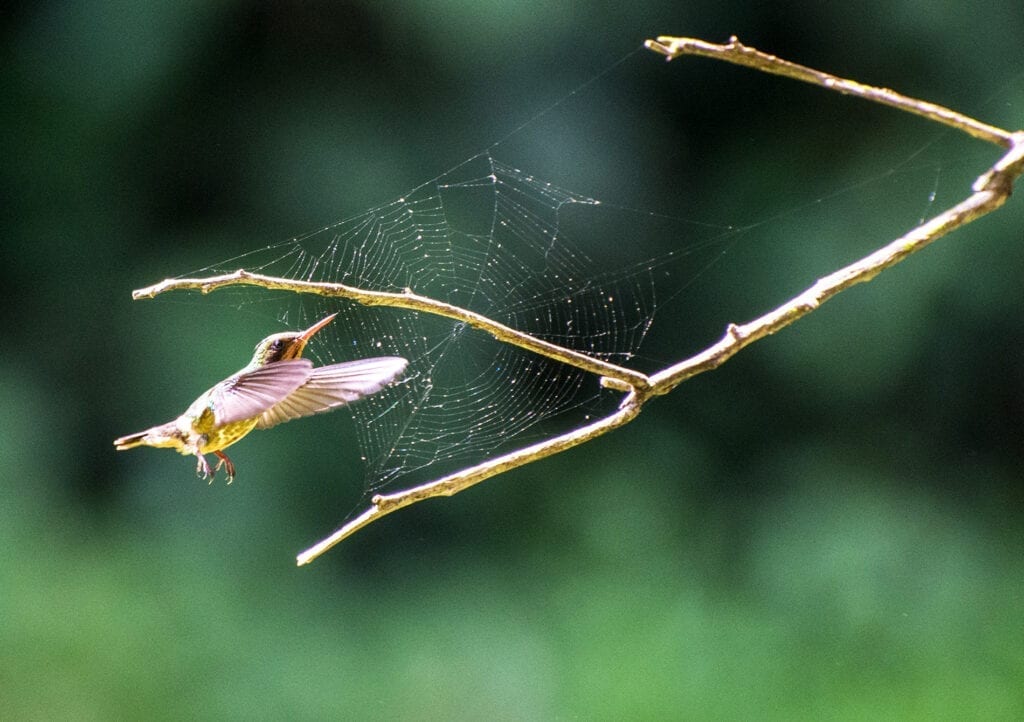
Finally, they’ll finish it off by covering it with lichens. It’s really amazing, not to mention camouflaged.
If you’re lucky enough to spot a hummingbird nest, you’ll realize how invisible they are. So you should always prune trees and shrubs very carefully. Always inspect every branch for hummingbird nests. Better yet, prune in late Summer to early Fall.

What NOT to use for hummingbird nest material:
There are other materials out there that are sold as “nesting materialâ€. Yet, many of these are actually dangerous for birds.
Birds are super sensitive to chemicals, so nesting material should be natural material. No chemicals or synthetics. Organic, plant-based, fluffy stuff is the safest.
Avoid animal or pet hair, also dryer lint
Unlike cattails or cotton stuffing, dryer lint usually contains fabric softener or dryer sheet chemicals. In addition, lint and animal hair usually contain long fibers, or hairs. These long fibers can be deadly for baby birds, as well as adults. They can wrap around baby birds’ legs and cut off circulation as they grow. They also can snag adult birds’ legs. Hanging, and killing them. It’s heartbreaking.
Here’s some more information from Audubon about bird nest materials.
Don’t delay collecting your cattail fluff. The fluff gets more sparse as Spring progresses. And we all know how Spring sneaks up and surprises us every year.
When should you put out your hummingbird nesting material?
It all depends on where you live. If you don’t already have a good idea, don’t guess. Use this super handy map of ‘first-sightings’ Then you’ll KNOW when they’re getting close. You’ll probably be surprised at how close they are.
Where do hummingbirds build nests?
Location, location, location!
Extremely important to hummingbirds are nice neighborhoods. Nice neighborhoods, according to hummingbird moms, are quiet and safe.
You can find pictures of all sorts of crazy places hummingbird nests have been found.
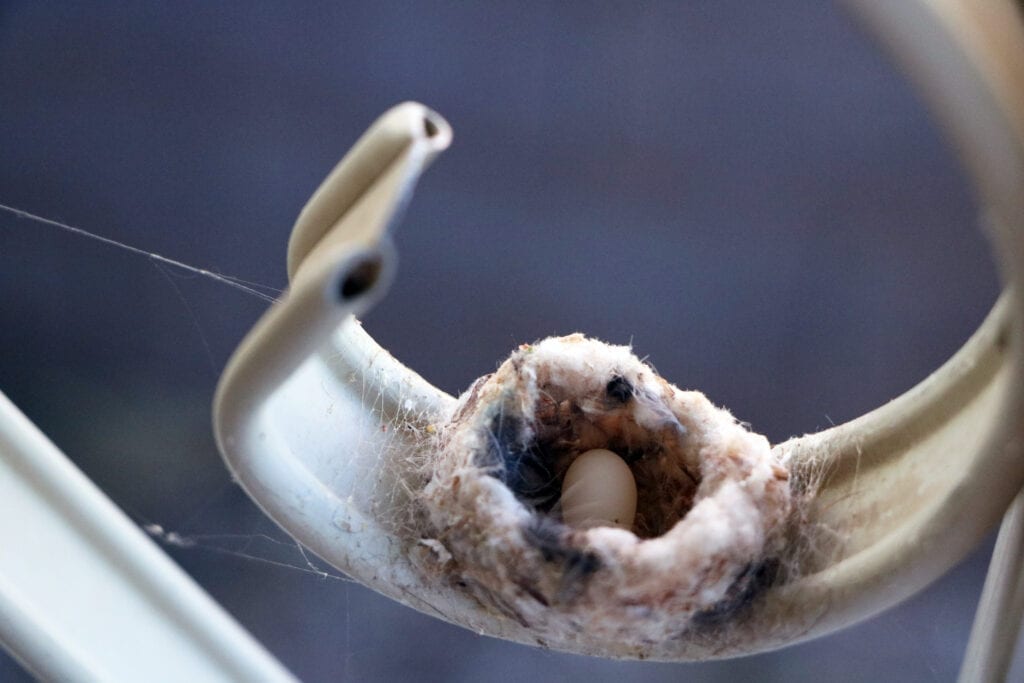
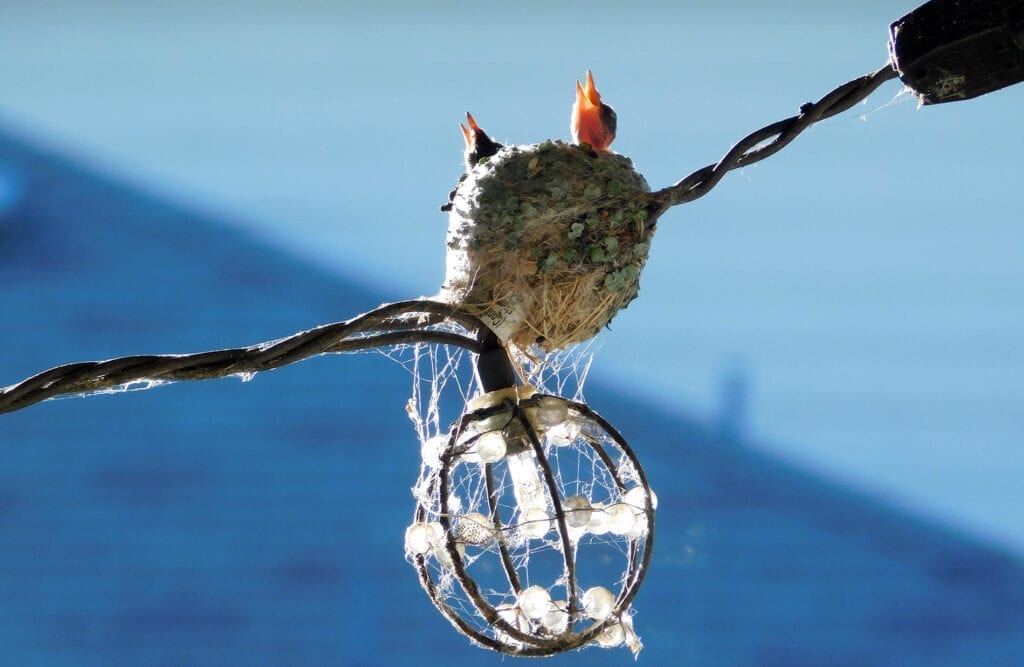
However, hummingbird nests are normally going to be built in a tree or shrub that provides cover.
Because they’re so good at applying camouflage, you may never get to see a hummingbird nest. If you’re lucky, you might find one in Winter, after the leaves fall. Trouble is, their nests are incredibly small. They can look like nothing more than a knot on a branch.
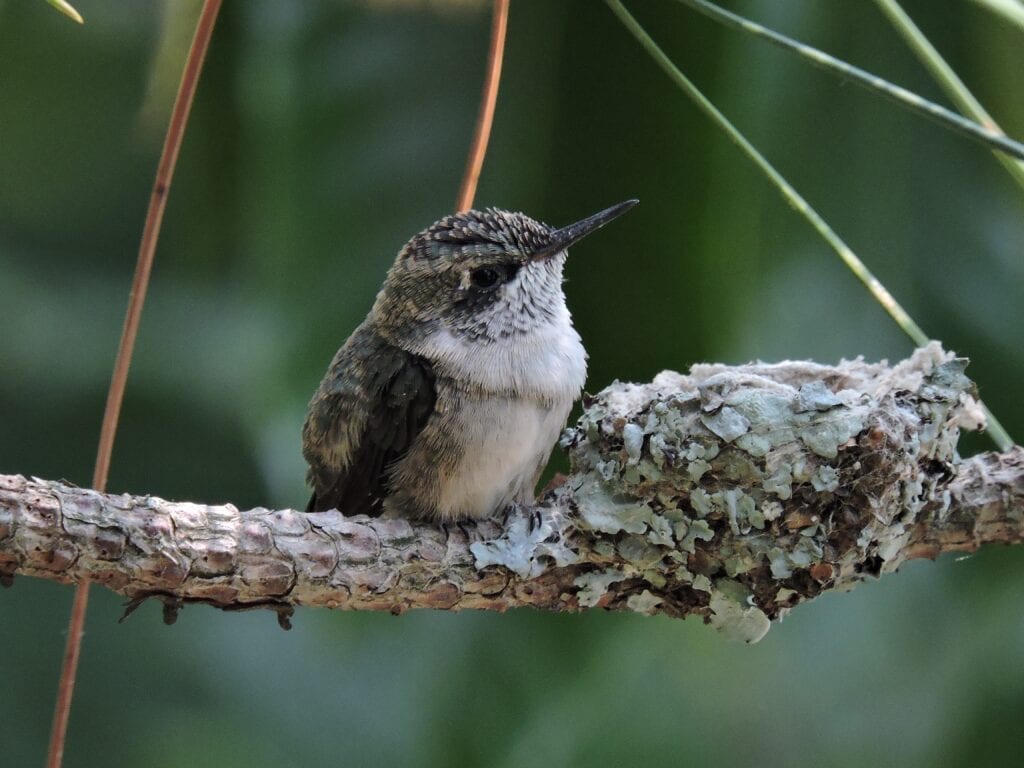
Where should you put your hummingbird nesting material?
Of course, locate it where the little buggers can easily access it. Preferably, where you can see it, too!
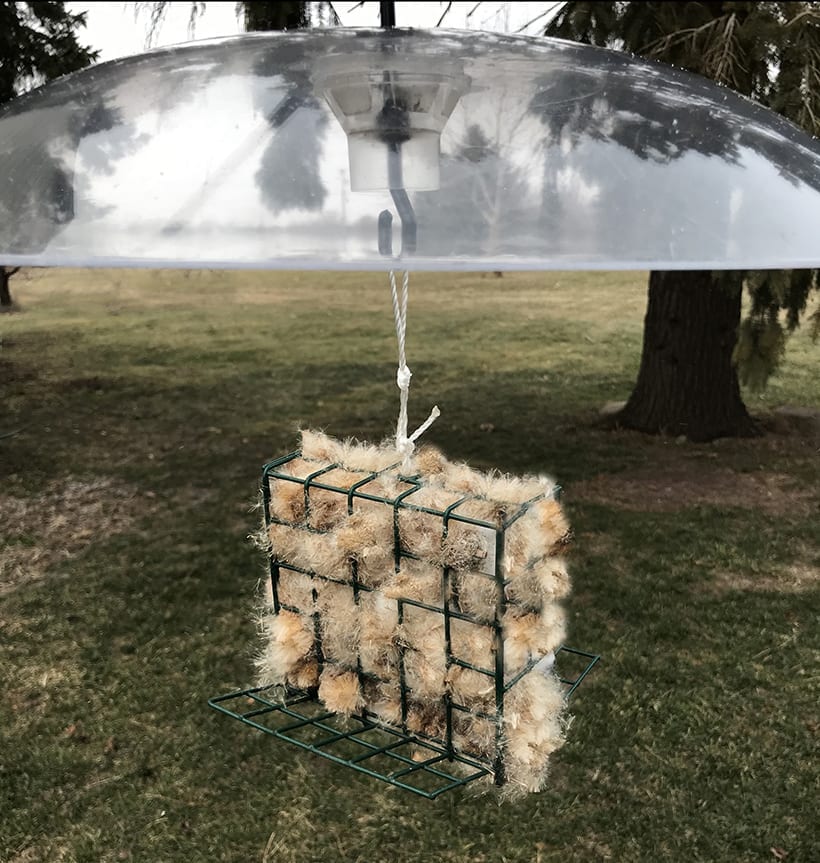
This coming year is supposed to be a little dryer than normal. But, if frequent rain will be an issue, you can locate it under an eaves or awning. Another option is to hang a rain hood (aka squirrel baffle) over it. There’s no need, though, if it only gets rained on every few days. It’ll dry out as long as it’s not raining day after day.
If the nest and location worked well, hummingbirds may re-use the same nest the next year. Build up the sides, add a little new fluff and it’s ready for another family. For that reason, if you find a nest in Fall, leave it be. She may need it next year. A ready-to-use nest will save her a lot of time and energy so she’d get a jump start on baby-raising. It could make the difference for her survival, as well as her babies’.
If you’re feeding other birds in your yard…
You may not have the neighborhood that hummingbird moms look for.
This may dash your dreams. Still, you need to know the cold truth. To hummingbirds, a lot of other birds mean Danger, Will Robinson! If you’ve got a backyard bustling with birds at seed feeders, you may not get hummingbird nests.
Blue jays, red-bellied woodpeckers, common grackles, crows, and others, will eat small bird eggs, even baby birds, right out of the nest. *insert horrified gasp here* But, wait! keep reading.
On the up-side, savvy hummingbird moms may still use you for your feeder and nesting material. Then, they’ll go nest in the neighbor’s yard. Yep, that neighbor who doesn’t even feed birds. It’s so unfair.
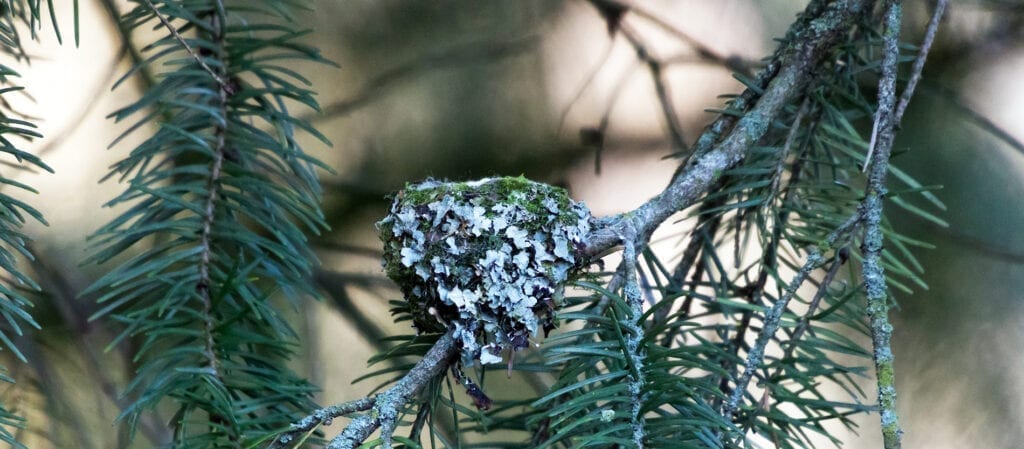
On the other hand, if you’re only feeding smaller birds, you might be in luck…
Smaller birds, like finches, juncos, and titmice don’t pose a threat to hummingbirds. Just make sure those other feeders aren’t anywhere near the hummingbird nests or feeder areas. Hummingbirds also don’t want other birds in their flight path. But, hopefully you won’t mind if those other birds help themselves to the nesting material.
Be their savior
OK, hummingbirds might not nest in your yard. But, just by feeding them and offering nesting material, you’re pretty much their savior. You’re providing stuff that’s essential for their survival. It truly makes all the difference.
Don’t Delay
Your feeder and nesting material should be waiting for the hummingbird moms when they arrive. Because as soon as they get here, they’ll need food. Shortly after, they’ll need nesting materials. Don’t worry if you don’t see any immediate action. Even if you don’t see any hummingbirds for a couple weeks.
It’s better to be two weeks early, than one day late.
Get your hummingbird feeder outside 2 weeks before you expect your hummingbirds. In case you missed it, here’s that migration map link again.
Here’s an interesting ‘Cliff Claven’… The male hummingbirds usually arrive before the females. And, no. The males don’t help with nest building. They’re much too busy trying to eliminate each other.
Make a minor become a your co-conspriator
You can make this a fun & educational activity for kids (and grandkids). They’d be learning stuff they’ll keep for life. It’ll get them out of the house but also jump start their life of crime by stealing cattails. It also could be helpful for your gift-giving. After this caper, they may want their own hummingbird feeder. So much better than another video game.
Have you found any hummingbird nests in your yard?
We know you took pictures.
Fellow hummingbird crazies want to see your photos. You can post them on our FaceBook page, We could also add them to our website’s ‘Gallery’ page. We would, of course, give credit.
